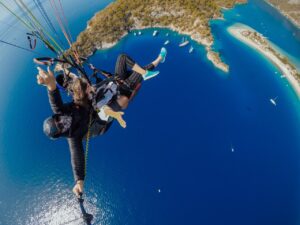Base jumping, an extreme sport that involves leaping from fixed objects like buildings, antennas, spans (bridges), and earth (cliffs), requires specialized equipment to ensure the safety and success of each jump. The unique challenges of base jumping, such as lower altitudes and proximity to structures, mean that the gear used is specifically design
ed to meet these demands. Here’s a comprehensive look at the essential equipment necessary for base jumping.
Parachute System
The parachute system is the most critical component of base jumping gear. It includes:
- Main Parachute: The main parachute is designed for rapid deployment and stability at low altitudes. These canopies are typically larger to allow for a softer and more controlled landing.
- Pilot Chute: This small auxiliary parachute is used to deploy the main canopy. In base jumping, the pilot chute is often hand-held to ensure immediate deployment upon jumping, crucial due to the lower altitudes involved.
- Harness and Container System: This system holds the parachute on the jumper’s back, providing security and comfort. It allows for easy deployment while ensuring the jumper can maneuver effectively during freefall and landing.
Protective Gear
Protection is paramount in base jumping, given the risks involved. Essential protective gear includes:
- Helmet: A helmet is crucial for protecting the jumper’s head during the jump and landing. It also provides a mounting point for cameras if the jumper wishes to record their jump.
- Body Armor: Including knee and elbow pads, body armor protects against injuries during rough landings or unexpected impacts with structures.
- Jumpsuit: Designed for base jumping, a jumpsuit provides flexibility and protection against wind and debris. It helps streamline the jumper’s body, reducing drag and enhancing control during the jump.
- Gloves: Gloves protect the jumper’s hands and provide a better grip on the pilot chute and other equipment.
Safety and Emergency Equipment
To manage the inherent risks of base jumping, safety and emergency equipment are essential:
- Altimeter: While less commonly used than in skydiving due to the lower altitudes, an altimeter can still be valuable in certain jumps, helping the jumper gauge their position relative to the ground.
- Reserve Parachute: Although not always used in every jump due to the low altitudes, a reserve parachute can be a lifesaver in emergency situations. It must be packed meticulously and easily accessible.
- Tracking Device: This can help locate a jumper in case of an emergency or unplanned landing in a remote area.
- Radio: A two-way radio allows the jumper to communicate with ground crew and other jumpers, ensuring coordination and safety throughout the jump.
Equip for Flight!
Base jumping demands not only skill and courage, but also the right equipment to ensure safety and performance. From specialized parachutes and harnesses to protective gear and communication devices, each piece of equipment plays a crucial role in the success and safety of a base jump. It is worth investing in high-quality gear, because it’s essential for making every jump as safe and exhilarating as possible.


